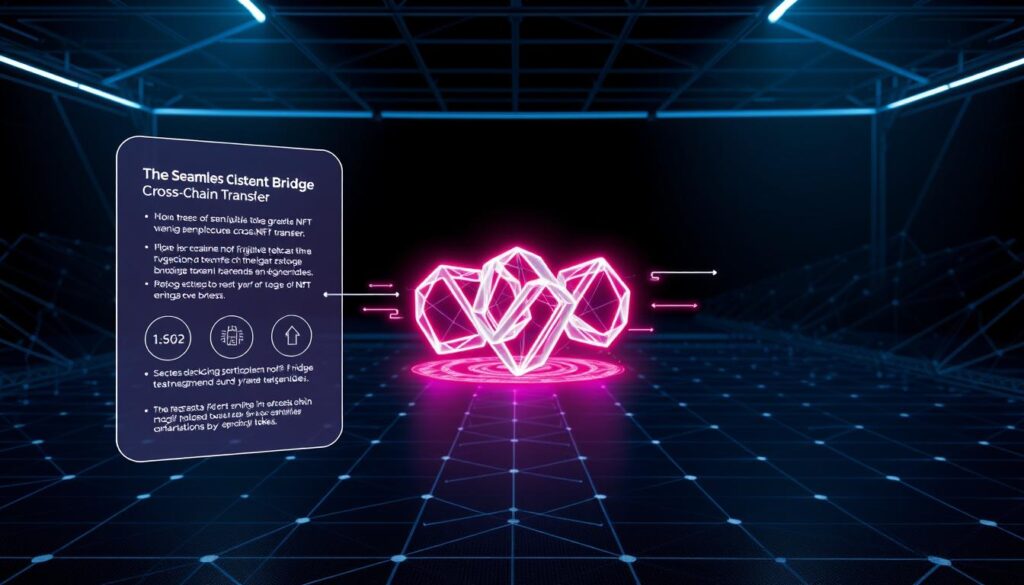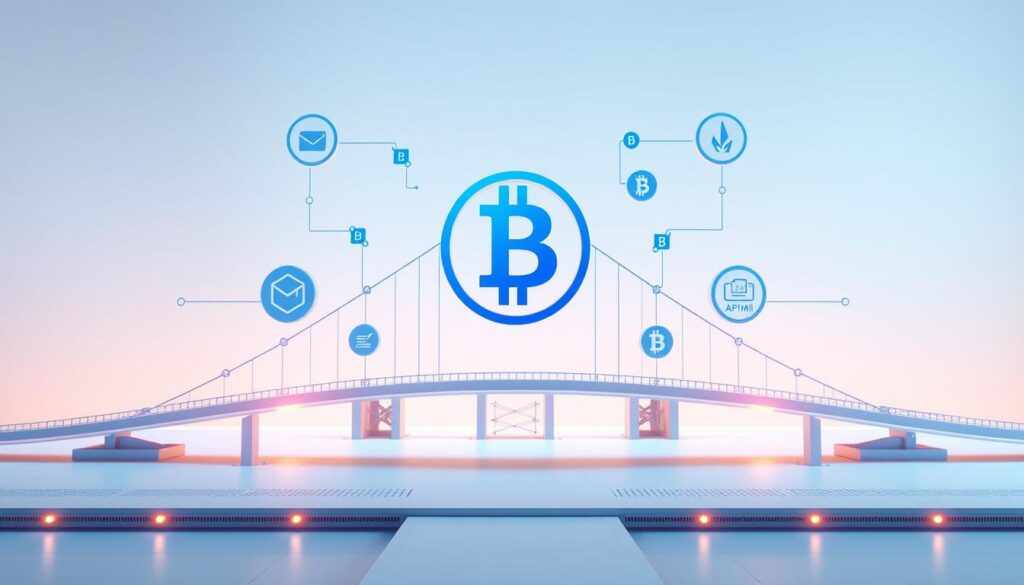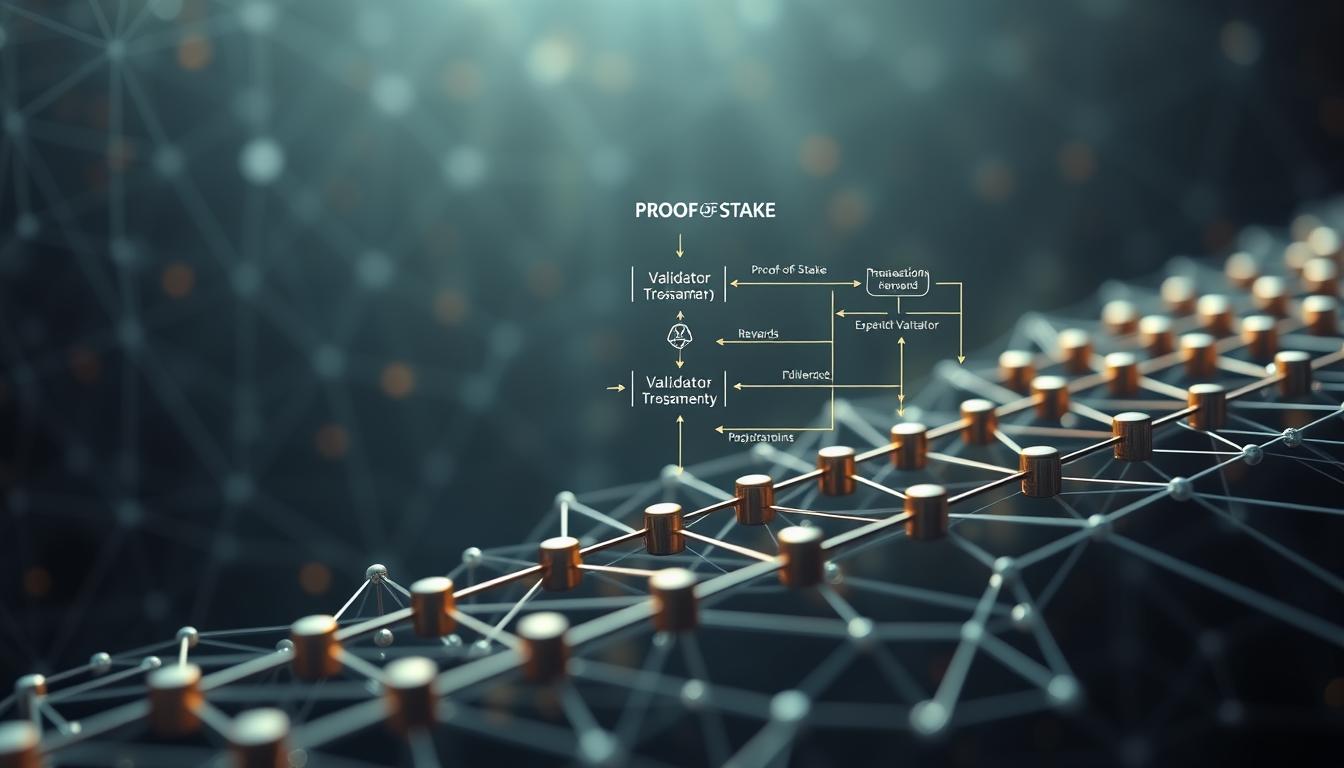Now Reading: NFT Bridge Cross Chain Transfer: Seamless Asset Movement
- 01
NFT Bridge Cross Chain Transfer: Seamless Asset Movement
NFT Bridge Cross Chain Transfer: Seamless Asset Movement

The digital landscape is constantly changing. Blockchain technology continues to evolve at a rapid pace. This growth has led to the creation of many distinct networks, each with unique features.
This expansion presents a significant challenge. Digital assets often remain trapped within their original network. This isolation limits their potential and accessibility for users across different platforms.
The solution lies in achieving greater interoperability. Specialised mechanisms now enable these unique digital items to move between different systems. This technology is crucial for unlocking their full value.
There is growing demand from creators, businesses, and collectors for seamless movement. They require systems that maintain authenticity and ownership records during the process. This guide explores the infrastructure that makes this possible.
Key Takeaways
- Blockchain ecosystems have expanded, creating numerous isolated networks for digital assets.
- Asset mobility between different platforms has become a significant challenge in the space.
- Interoperability is now a key focus for developers and businesses in the industry.
- Specialised technology allows unique digital items to move between systems securely.
- This movement enhances liquidity and expands market access for creators and collectors.
- Maintaining authenticity and ownership history during the process is essential.
- This guide covers the concepts, components, and implementation of these solutions.
Overview of Cross-Chain NFT Bridging
Digital asset mobility across various platforms has emerged as a critical requirement for modern blockchain applications. This technology enables unique digital items to move securely between different ecosystems.
Evolution of Blockchain Interoperability
Early blockchain networks operated as isolated systems. Each platform developed its own rules and protocols. This isolation created significant barriers for asset movement.
The emergence of interoperability protocols transformed this landscape. Wrapped tokens and relay chains enabled communication between previously separate networks. These innovations allowed assets to move across different architectures.
The Role of NFTs in the Digital Age
Unique digital tokens have revolutionised concepts of digital ownership. They represent specific items or content with verified authenticity. This technology has created new economic models for creators.
These digital assets find applications across multiple industries. Art, gaming, and virtual real estate benefit from their unique properties. Confining them to single platforms limits their market reach and utility.
| Interoperability Approach | Key Technology | Primary Use Case | Security Level |
|---|---|---|---|
| Wrapped Assets | Smart Contracts | Token Representation | Medium |
| Relay Chains | Cross-Chain Messaging | Network Communication | High |
| Oracle Networks | External Data Feeds | Verification Services | Variable |
| Atomic Swaps | Hash Time Locks | Peer-to-Peer Exchange | High |
The development of these technologies marks significant milestones. They enable previously isolated networks to communicate effectively. This progress supports the growing demand for seamless digital asset movement.
Understanding NFT Bridge Cross Chain Transfer
Modern distributed systems require seamless connectivity to maximise the utility of digital property. This technology enables unique digital assets to traverse various platforms while maintaining their core characteristics.
Defining the Process
The mechanism operates through a sophisticated locking and minting procedure. When a digital collectible moves between platforms, it first becomes secured on the original ledger.
A cryptographic proof validates this secure state. This evidence then travels to the destination environment where a corresponding version is created.

Specialised applications manage this entire operation. They utilise smart contracts with specific conditions that must be satisfied for the operation to proceed successfully.
Relevance in Modern Blockchain Solutions
This technology addresses critical fragmentation issues across various distributed ledgers. It unlocks access to broader audiences and trading venues that were previously inaccessible.
Projects confined to single platforms gain exposure to diverse ecosystems. Users can leverage the unique advantages of multiple environments simultaneously.
The approach supports innovative business models and applications. Cross-platform gaming assets and multi-chain marketplaces represent just some emerging use cases.
Key Components of a Cross-Chain NFT Bridge
Four core elements form the foundation of any system that facilitates digital property movement across distributed networks. These components work together to ensure secure and reliable transfers between different platforms.
Smart Contracts and Relayer Systems
Smart contracts serve as the backbone of the entire operation. Two specialised contracts handle the critical phases. A locking contract secures the original asset on the source ledger.
A minting contract creates the corresponding version on the destination platform. These automated agreements enforce predefined rules and verification checks.
Relayer systems act as trusted intermediaries between networks. They monitor events and trigger corresponding actions. This ensures the entire process maintains data integrity.

User Interface and Off-Chain Orchestration
The user interface provides an accessible portal for initiating transfers. It abstracts technical complexity while displaying real-time status updates. Users can monitor progress without deep technical knowledge.
Off-chain orchestration coordinates communication between all components. This backend service manages the multi-step process. It handles error conditions and ensures harmonious operation.
| Component | Primary Function | Security Role | User Interaction |
|---|---|---|---|
| Smart Contracts | Automate locking and minting processes | Enforce transfer rules | Minimal direct contact |
| Relayer Systems | Bridge communication between networks | Verify transaction authenticity | Background operation |
| User Interface | Provide access and status updates | Input validation | Primary interaction point |
| Orchestration Layer | Coordinate multi-step processes | Error handling | Transparent to users |
Step-by-Step Guide to Building a Cross-Chain NFT Bridge
Building infrastructure that enables seamless digital collectible transfers across networks demands a structured approach to development. This guide provides a practical roadmap for creating functional interoperability solutions.
The initial phase focuses on establishing the proper development environment. Essential tools include Node.js for runtime operations and npm for package management.

Developers should install Hardhat using the command npm install --save-dev hardhat. This framework streamlines smart contract creation and testing. MetaMask integration facilitates transaction testing on public networks.
Setting Up the Development Environment
Begin by creating a project directory with mkdir cross-chain-nft-bridge. Initialise the Hardhat project using npx hardhat init. This generates the necessary folder structure for contracts, scripts, and tests.
Local testing environments like Ganache offer rapid development cycles. Testnet configurations provide more realistic deployment scenarios before production launches.
Writing and Deploying Smart Contracts
The core functionality resides in specialised contracts that handle asset locking and minting. These agreements enforce ownership verification and secure token movement.
Compile your contracts using npx hardhat compile. Deploy to test networks with commands like npx hardhat run scripts/deploy.js --network rinkeby. Always verify deployments using blockchain explorers.
Thorough testing identifies potential issues before production. Unit tests validate individual functions while integration tests simulate complete workflows.
Essential Tools and Technologies for NFT Bridging
Developers face critical decisions when assembling the technical components for interoperability systems. The right tools ensure reliable movement of digital collectibles between different environments.

Development Frameworks and Libraries
Modern development relies on specialised frameworks like Hardhat and Truffle. These environments streamline smart contract creation and testing processes.
JavaScript libraries such as Web3.js and Ethers.js enable applications to interact with distributed ledgers. They handle transaction submission and event monitoring efficiently.
Frontend platforms including React and Vue.js create intuitive interfaces for users. These frameworks simplify complex technical operations.
Blockchain Networks and Oracle Services
Multiple blockchain networks participate in these operations. Ethereum remains dominant, while Binance Smart Chain offers cost-effective alternatives.
Oracle services provide external verification for enhanced security. Solutions like Wormhole and StacksBridge demonstrate practical implementations.
IPFS storage preserves metadata across different environments. This ensures digital item properties remain accessible regardless of hosting location.
Security and Best Practices in Cross-Chain Transfers
Security considerations form the bedrock of reliable interoperability solutions across distributed ledger technologies. These systems face unique challenges when digital collectibles move between networks with different security models.
Comprehensive protection requires multiple layers of defence. Each component must undergo rigorous testing before deployment.
Smart Contract Audits and Multi-Signature Safeguards
Thorough security reviews by specialised firms are essential before deploying any contracts. These audits identify vulnerabilities like reentrancy attacks and access control flaws.
Multi-signature systems distribute control across multiple parties. This prevents single points of failure in critical operations.
Understanding cross-chain bridge protocols helps developers implement proper safeguards. Proper key management using hardware security modules protects against unauthorised access.
Redundancy Measures and Error Handling
Architectural redundancy ensures continuous operation during component failures. Multiple independent relayer nodes and fallback services maintain system availability.
Robust error handling manages failed transactions gracefully. Retry mechanisms and reversal procedures prevent asset loss during network disruptions.
Rate limiting prevents denial-of-service attacks while monitoring systems detect anomalous activity. These measures create a secure environment for digital asset movement.
Achieving Interoperability Across Multiple Blockchain Networks
As blockchain platforms proliferate, the challenge of seamless asset movement between them intensifies. Each distributed ledger operates with unique consensus mechanisms and architectural designs.
This diversity creates natural barriers that interoperability solutions must overcome. Successful integration requires accommodating fundamental differences in block times and transaction formats.
Integrating Diverse Chains
Modular contract designs enable adaptation to various blockchain environments. Standardised communication protocols abstract chain-specific differences effectively.
Wrapped token mechanisms ensure compatibility across different blockchain networks. They maintain digital asset identity while conforming to local standards.
| Blockchain Feature | Ethereum | Solana | Polygon |
|---|---|---|---|
| Consensus Mechanism | Proof-of-Stake | Proof-of-History | Proof-of-Stake |
| Transaction Speed | 15-30 TPS | 50,000+ TPS | 7,000+ TPS |
| Native Standard | ERC-721 | SPL Token | ERC-721 |
| Gas Fees | Variable | Low | Very Low |
Multi-chain support unlocks access to broader markets and diverse communities. Projects confined to single platforms gain exposure to entire ecosystems.
This approach represents the next evolutionary step for digital collectibles. It transforms them into universal assets moving freely across the entire landscape.
Advanced Techniques: Bridging Versus Swapping NFTs
Two primary technical approaches govern how unique digital assets traverse between separate blockchain ecosystems. Each method serves distinct purposes with specific operational characteristics.
Bridging focuses on moving individual collectibles between networks while preserving their identity. Swapping involves exchanging different digital items across platforms, often for profit or collection diversification.
Atomic Swaps and Token Wrapping Explained
Atomic swaps enable direct peer-to-peer exchanges without intermediaries. These trustless protocols use hash time-locked contracts to ensure simultaneous execution.
Both transactions either complete successfully together or fail entirely. This eliminates counterparty risk in cross-chain nft exchanges across different blockchain networks.
Token wrapping creates compatible representations of digital collectibles on foreign networks. The original nft remains locked securely on its native chain.
A wrapped version circulates on the destination platform with all essential metadata intact. This maintains the principle that only one transferable version exists at any time.
These advanced crypto techniques empower sophisticated digital asset management. They enable both individual movement and marketplace exchanges across multiple platforms.
User Interface and Off-Chain Relayer Integration
The success of any interoperability solution depends heavily on its user-facing components. A professional interface makes complex technical processes accessible to mainstream users.
Designing a User-Friendly Frontend
Modern interfaces must guide users through each step clearly. They should display real-time status updates for every transaction.
React frameworks create responsive applications that work across devices. Web3.js libraries handle blockchain interactions seamlessly.
Clear wallet connection flows and network selection prompts simplify the process. Users can monitor progress without technical expertise.
Best Practices for Off-Chain Transaction Monitoring
Robust backend systems ensure reliable operation across different platforms. Event listeners continuously watch for specific blockchain activities.
Transaction processors validate each step of the movement process. They coordinate actions between multiple networks securely.
Monitoring tools like Prometheus track system performance metrics. Multiple relayer nodes prevent single points of failure.
Regular security audits identify potential vulnerabilities. Proper error handling manages failed operations without asset loss.
Conclusion
Interconnected blockchain ecosystems represent the next frontier for digital collectibles and their economic potential. These innovative solutions transform how unique digital items move between different platforms while maintaining their authenticity and ownership records.
The development of robust interoperability technology requires comprehensive expertise across multiple technical domains. Security remains paramount throughout the entire process, from smart contract creation to user interface design.
As distributed ledger technologies continue to evolve, these advanced systems will become essential infrastructure. They enhance market access and create new opportunities for creators and collectors alike.
Continuous innovation and rigorous testing ensure these solutions remain adaptable to emerging challenges. The future promises even greater connectivity across diverse blockchain environments.
FAQ
What is the primary purpose of a cross-chain NFT bridge?
The main goal is to enable the movement of digital assets, like non-fungible tokens, between different blockchain networks. This process enhances liquidity and allows collectors to access various markets and platforms without being confined to a single ecosystem.
How does a cross-chain bridge ensure the security of my assets during a transfer?
Security is maintained through mechanisms like smart contract audits and multi-signature authorisations. These tools help verify the transaction’s validity and protect the original asset’s ownership details throughout the process.
What is the difference between bridging and swapping a token?
Bridging typically involves locking an asset on one network and minting a representation of it on another. Swapping, such as an atomic swap, is a direct peer-to-peer exchange of assets that may not require a third-party solution or a wrapped token.
Which blockchain networks are commonly supported by these bridges?
Many solutions support popular networks like Ethereum, Polygon, and Binance Smart Chain. The aim is to achieve broad interoperability, allowing transfers across multiple chains to increase an asset’s utility and value.
What role do smart contracts play in the bridging process?
Smart contracts are the core programming that automates the transfer. They lock the asset on the source chain and coordinate with relayers to mint a corresponding token on the destination chain, ensuring the transaction is trustless and secure.
Can I bridge any NFT, and what information is transferred?
Most bridges support standard token types, but it is essential to check compatibility. The bridge transfers the ownership and core content metadata, but the original NFT remains locked or is burned on its native chain during the process.
What tools do developers need to build a cross-chain bridge?
Developers require specific development frameworks, libraries for writing contracts, and often oracle services to fetch off-chain information. Setting up a proper development environment is the first critical step.
How does a user interface improve the bridging experience?
A well-designed frontend simplifies the complex steps for users. It provides clear instructions for initiating transfers and displays transaction status, making the technology accessible to non-technical individuals.














